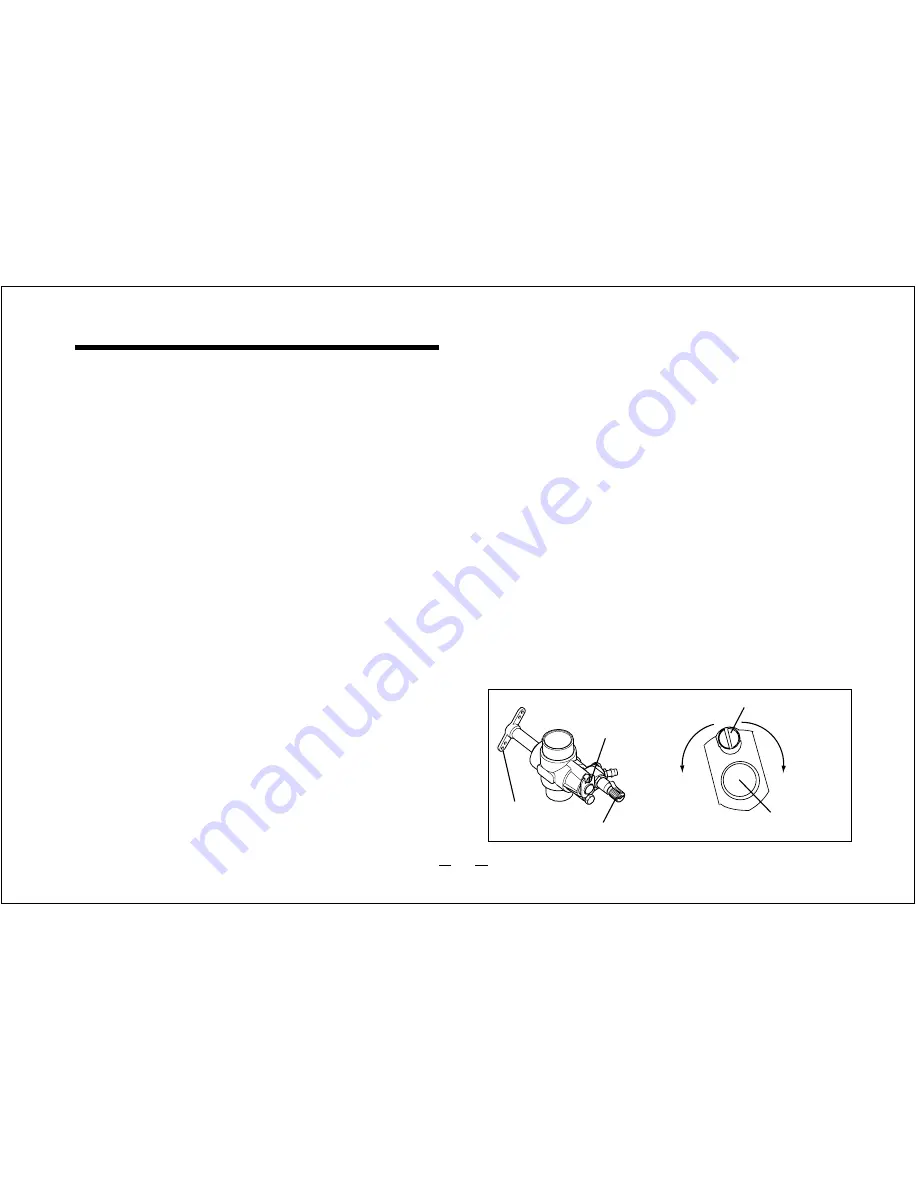
CARBURETOR CONTROLS
With a fixed-wing model, power failure is rarely a
serious threat to the safety of the aircraft since it can
usually glide down to a safe landing. In a helicopter,
on the other hand, it is vitally imporant that the engine
keeps running and that there is a quick and reliable
response to the throttle in order to ensure safe ascent
and descent of the model.
The Needle Valve:
When set to produce maximum power at full throttle,
this establishes the basic fuel/air mixture strength.
This is then maintained by the carburetor's
automatic mixture control system to cover the
engine's requirements at reduced throttle settings.
The Mixture Control Valve (Mixture ControlScrew):
For adjusting the mixture strength at part-throttle
and idling speeds, to obtain steady idling and
smooth acceleration to medium speeds. The Mixture
Control Valve has been factory set for the
approximate best result. First, run the engine as
received, and re-adjust the Mixture Control Valve
only when necessary.
Two adjustable controls are provided on this carburetor.
Needle Valve
Throttle Lever
Mixture Control Valve
(MIxture Control Screw)
•
•
BASIC POSITION OF MIXTURE CONTROL VALVE
(Mixture Control Screw)
Thick
Mixture Control Valve
MIxture Control Screw
Lean
As delivered, the Mixture Control Screw is positioned
at around the center as shown in the sketch.
Mixture gets lean when the Mixture Control Screw is
turned right, while mixture gets rich when the Mixture
Control Screw is turned left. With a model helicopter,
adjustments vary with combined various factors such
as climatic conditions, fuel, muffler, main rotor,
weight of the model, gear ratio, etc. Therefore,
Mixture Control Screw position varies with each
model and set- up, and it is normal if the Mixture
Control Screw position is off the center.
This carburetor is not fitted with a throttle stop
screw. Instead, idling speed is adjusted by means
of the throttle trim lever on the transmitter.
12














































